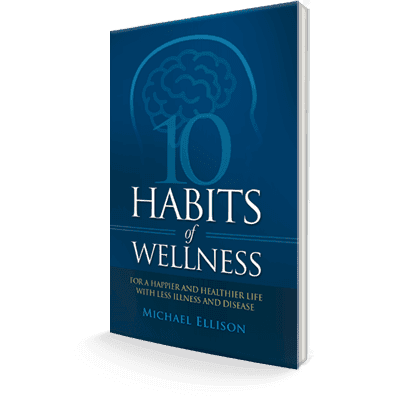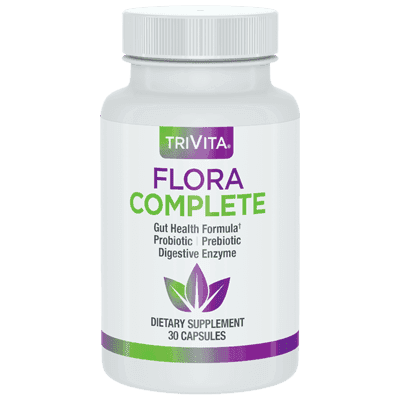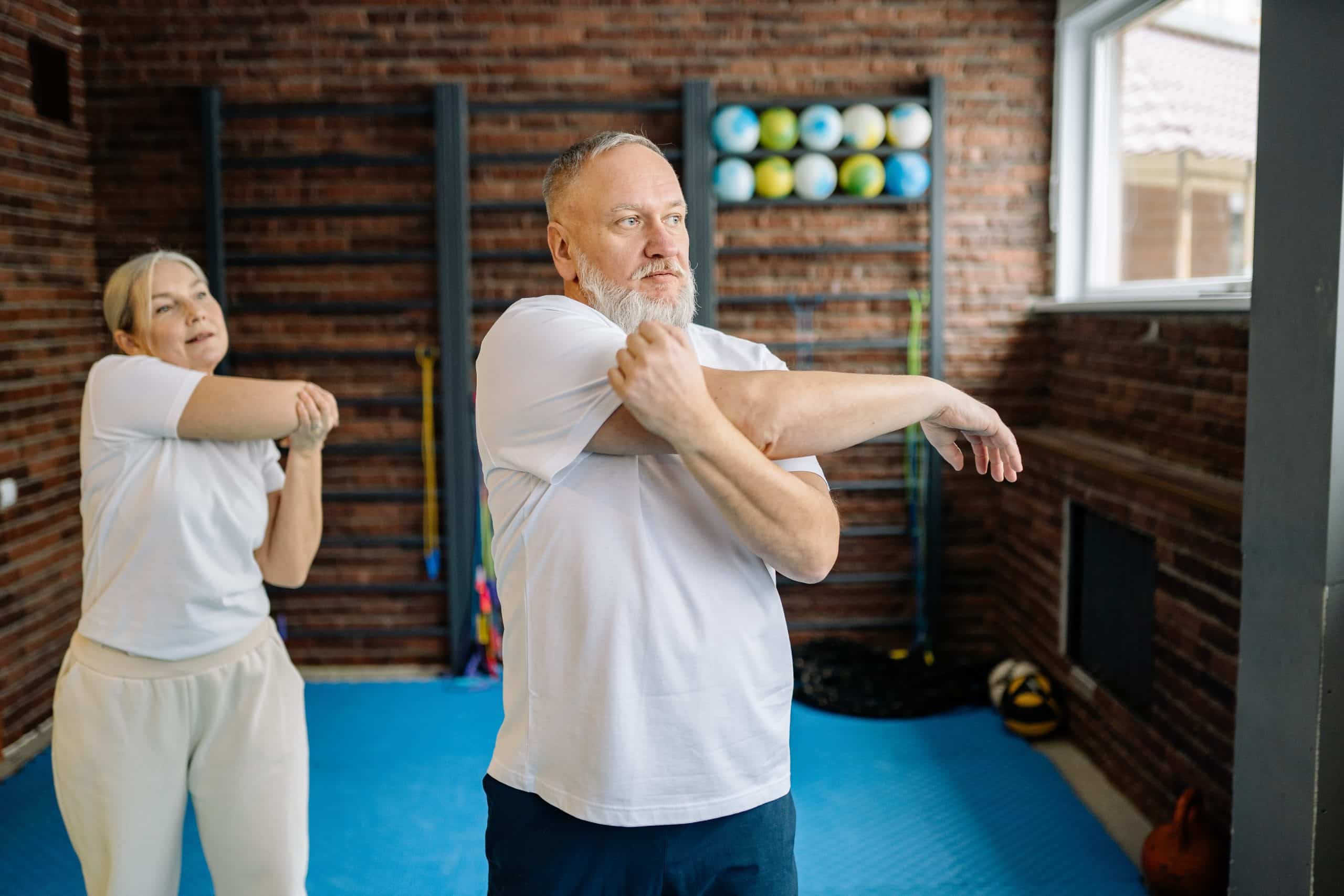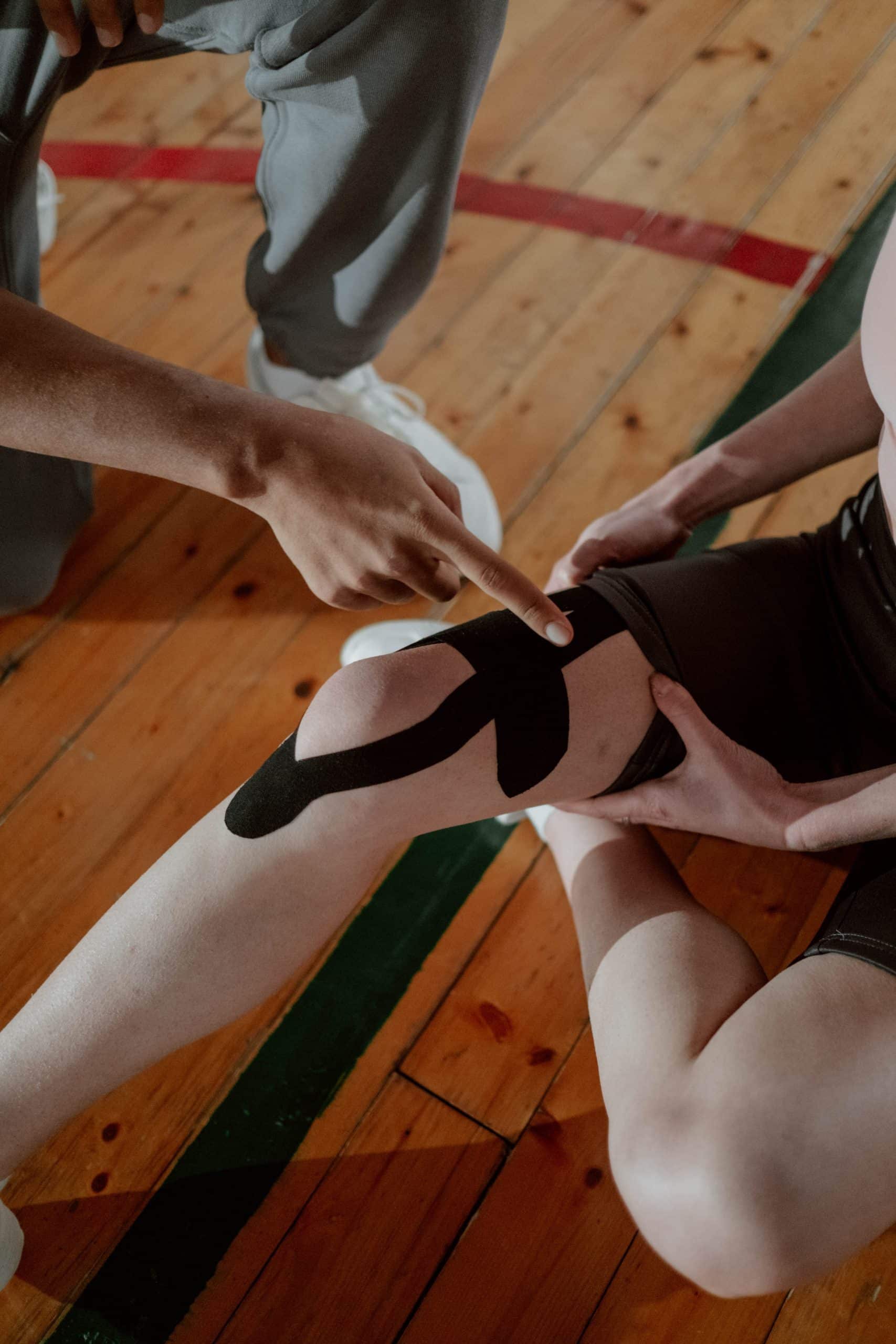Your cart is currently empty!
Category: Health and Wellness
-

How to Stay Hydrated
Everyone knows it’s important to drink water, but many fail to do so correctly. For some, they don’t like the taste of pure water, and instead drink coffee, sodas, or sweetened teas which can dehydrate your body further.
The human body is comprised of mostly water and is continually losing water through respiration, perspiration, and urination. So, it’s critical to rehydrate throughout the day, especially during hotter times of the year, as well as before, during, and after exercise or other physical exertion.
Here are a few of the most common types of water available that can help keep you hydrated and healthy.
Mineral Water
Mineral water comes from underground springs and naturally contains minerals such as calcium, iron, magnesium, and manganese. Mineral levels can vary between brands, and the presence of the minerals often gives a salty taste to the water.
Alkaline Water
Drinking alkaline water is believed to help neutralize acids in your body and metabolize nutrients more efficiently. Alkaline water is less acidic than regular tap water and may have nutrients added to it such as calcium, silica, potassium, and bicarbonate.

Coconut Water
In recent years, coconut water has become a popular drink of choice. Coconut water is the liquid found inside young coconuts. Coconut water has high electrolyte content and has a slightly sweet taste.
Electrolyte Water
Electrolyte waters are enhanced with sodium and potassium to help your body absorb water quickly and prevent dehydration, especially in intense heat or physical exertion.
Sparkling Water
Sparkling water is just carbonated water. When carbon dioxide is added to water, it becomes bubbly, which is a healthy and hydrating alternative to sodas.
Spa Water
This may sound like an ultra-fancy type of water, but it’s just fruit-infused water. Adding fruits, veggies, and even herbs can provide a flavor and nutrient boost to your water. Stay refreshed and hydrated by adding watermelon, strawberries, citrus fruits, cucumber, or mint and enjoy!
-

7 Foods to Help Reduce Stress
Getting stuck in traffic, working with difficult people, or dealing with any of life’s inevitable challenges can leave you feeling overwhelmed and emotional. It’s during these times that most people turn to food for comfort. While it may feel right at the time, reaching for ice cream and chips can make things worse.
Maintaining a healthy diet can help counterbalance the harmful effects of physical and emotional stress. Here are seven foods and nutrients that can help ease stress and improve your well-being.
Complex Carbs and Whole Grains
Complex carbohydrates are thought to decrease stress by increasing serotonin production. Serotonin affects every part of your body and is considered a natural mood stabilizer. Foods rich in complex carbs include whole grains, such as oatmeal, quinoa, and whole-grain bread. To boost your happy hormones, avoid refined grains and simple carbohydrates like white bread, bagels, cookies, sugary foods, and drinks.
Probiotics and Prebiotics
Trillions of bacteria live within your digestive tract; this is your microbiome. These bacteria play an essential role in your physical and mental well-being. The right balance of gut bacteria helps you digest food, absorb nutrients, strengthen your immune system, and bolster your defenses against chronic diseases, such as inflammatory bowel disease and obesity. Gut bacteria diversity can also influence your mood.
To promote a healthy microbiome, add probiotic and prebiotic foods to your diet. These include foods such as kefir, kombucha, pickled and fermented foods, asparagus, onions and garlic, legumes, and fruits like apples and bananas.
Herbal Teas
Sipping a warm cup of tea can be extremely comforting during times of stress. There are many calming teas on the market today, so don’t be afraid to try a few different types to find the one that works best for you. Some of the most well-known stress-busting teas include chamomile, peppermint, lemon balm, and green tea. Green tea contains L-theanine, an amino acid, that has been shown to reduce physical and psychological effects of stress.
Adaptogens
Adaptogens are special compounds found in certain plants and foods. These adaptogens can help your body handle physical and emotional stress by either increasing or decreasing your immune response based on what your body needs. Common adaptogens include ashwagandha, maca root, and reishi mushrooms.
Add Adaptuit to your daily stress management routine and reap the benefits of powerful adaptogens plus L-theanine!
Folate
Mental Health America reports that low folate levels have been linked to depression and even dementia. Fortunately, folate (vitamin B9) is found in many fruits, vegetables, and fortified foods. Fill up on folate-rich foods such as asparagus, broccoli, spinach, oranges, avocado, eggs, beets, and bananas.
Keep in mind that other factors such as chronic disease, tobacco and alcohol use, medications, and genetics can all affect folate levels. This is just another reason to see your doctor regularly to determine if you’re low on this important nutrient.
Omega-3 Fats
Omega-3 fatty acids are beneficial in decreasing anxiety and depression, and, in turn, reducing stress. Good dietary sources of omega-3s include oily fish like sardines, herring, anchovies, as well as eggs and grass-fed meat. Plant-based options include flaxseeds, chia seeds, walnuts, spinach, and Brussels sprouts.
Crunchy Foods
When stress strikes, you’re more likely to clench your jaw and raise your shoulders. Munching on a healthy, crunchy snack such as carrots, celery, nuts, or dried banana chips can help release tension in your jaw, face, and neck, thus reducing your chances of grinding your teeth and developing a tension headache or migraine.
-

Recipe: Easy Veggie Chips

Here’s a nutritious way to enjoy some crunchy, tasty chips. By thinly slicing and baking vegetables, you’re able to get your chip fix without compromising your health goals.
Make a large batch on the weekend and portion your veggie chips out into ziplock bags for the week.
HERE’S WHAT YOU NEED:
• 2 lbs of root vegetables, thinly sliced (sweet potato, parsnips, beets or carrots)
• Sea salt or Himalayan salt Cajun spice (or any spice of your choice)
Preheat the oven to 375 degrees. Line a rimmed baking sheet with parchment paper.
Thinly slice the root vegetables to about 1/8 inch thickness. Toss the sliced veggies with a sprinkle of salt and Cajun spice.
Spread the sliced veggies in a single layer over the prepared baking sheet. Roast for 15 minutes, and then flip them over. Roast for another 5-10 minutes or until crispy. Enjoy!
-

Top 3 Fitness Tips to Detoxify
Try these poses to help stimulate your body’s natural detoxification.
1. TWIST IT UP!
Any twisting pose will help to ‘wring out’ your internal organs. Try sitting up straight in a chair and keeping your hips level, rotate your upper body gently to the right, hold for 30 seconds, rotate to the left and hold for 30 seconds more.


2. FORWARD BEND
Stand with your legs wide, then do a forward bend, folding forward at your waist as far as you comfortably can. Hold for 30 seconds. This compresses your digestive organs, which helps to speed up elimination.
3. INVERSIONS
Lay on your back and raise your feet into the air so that they are above your heart, then rest your feet on a wall or a chair and hold for 30 seconds. This stimulates circulation, which helps the body to flush out toxins.
-

ZZzzz…
Research has shown that catching a few Zs during the day can benefit mental and physical health
The need for sleep is beyond debate. No wonder it’s one of TriVita’s Essentials For Health and Wellness. A good night’s sleep helps enhance heart function, hormonal maintenance and cell repair.
It also boosts memory and overall brain function. Sleep deprivation causes the opposite effect and can ultimately degrade your health.Napping benefits
Throughout the world (not so much North America) napping is an established daytime ritual. Millions of Chinese workers nap at their desks for an hour after lunch, and daytime napping is common in many European countries. However, the truth is very few North American workers would risk taking a nap at their desk.
Studies have actually shown that napping can benefit mental clarity, creative thinking and improve memory. Naps can even have a physical benefit. One study of over 23,000 Greek men showed that participants who napped three times a week had a 37 percent lower risk of dying from heart disease than those who didn’t nap. Another study showed that people who napped had higher test scores on memory tests.
Sleep experts have determined that daytime naps can help:
- Improve alertness
- Boost creativity
- Reduce stress
- Improve perception, stamina, motor skills and accuracy
- Enhance mood and boost memory
How much nap-time is right for you? Ten to 15 minutes of sleep seems to be the optimum amount for improving mental performance and alertness. Longer naps tend to leave people feeling drowsy and less alert.
Here are some tips to maximize the value of your nap:
- Set an alarm for the specific amount of time you want to sleep.
- Don’t sleep for too long, or you will wake up feeling groggy.
- Choose the right time of day when your energy levels are naturally decreased.
- Experiment with different times of the day, different nap lengths and different ways of waking up.
- Establish a napping space with as little light as possible.
Don’t ignore your daytime sleepiness. A good snooze can really brighten the rest of your day.
-

Setting the Record Straight with Self-Talk
Why are some people more successful than others? Why do some people seem to grow and develop into a better version of themselves while others remain stagnant year after year? The answer is more straightforward than you might think; It all comes down to your programming.
Shad Helmstetter, Ph.D. has dedicated his life and career to unpacking how the messages (programs) a person receives throughout their life impacts their success and happiness. “Our thoughts determine what is going to happen and how successful we’re going to be. This is foundational. It has to do with every single part of our lives.”
How The Brain Wires Programs
“It is widely acknowledged that as we grow up, we are programmed and eventually live out those programs. And we’ve learned more recently that all of those messages — the programs given to us consciously and unconsciously by our families, teachers, cultures, etc. — are physically wired into the brain when they’re repeated often enough,” explains Dr. Helmstetter.
One of the jobs of the brain is to store all of the information accumulated each day. Neuroscientists were studying how the brain stores information most efficiently and they found that repetition was the key. When you first hear a message, your brain receives it and records it but doesn’t permanently store it. But when you get the same message, again and again, the new fledgling neural network that’s starting to form grows a little stronger. Each time it’s repeated, that specific neural network is being fed and becomes stronger. That’s how you learned most of what you know and still remember it today. For example, think of a song you learned as a child; you can still remember the words to that song, years later, because of the power of repetition.
A reinforced idea creates strong neural pathways in the brain, but these aren’t fixed. They are like temporary footpaths; when used only once or twice, it’s easy to “erase” the path. However, when used again and again, the trail becomes more firmly established and easier to follow next time. When an old pathway is abandoned (no longer reinforced) it slowly begins to disappear.
How to Rewire Programs
The latest scientific research in the field of neuroplasticity demonstrates that what you think and what you say to yourself each day wires your brain for success or failure. “One of the most exciting new revelations,” says Dr. Helmstetter, “is that people who tend to talk in the affirmative, so positive thinkers, actually grow more neural networks in the left prefrontal cortex of the brain. Interestingly, that’s the part of the brain that helps us find alternatives and searches for solutions. That part of the brain helps us succeed no matter what we’re doing.
On the other hand, people who are negative talkers or negative thinkers wire more neural networks in the right prefrontal cortex of the brain, which is the part of the brain that causes us to be afraid, to shut down, or run away rather than find solutions.” Dr. Shad Helmstetter emphasizes that this is crucial because not long ago scientists and researchers weren’t convinced that positive thinking or positive self-talk made much of a difference. “Then we were able to watch it actually happen in neurological terms and what we know now is that our thoughts determine what’s going to happen. They clearly affect how successful we’re going to be, and this is foundational. This impacts every single part of our lives.”
If you aren’t currently a positive thinker, rest assured you’re not alone and there’s a way you can override your old programs. “It’s estimated that about 77 percent of the programs we have are negative, harmful, or counterproductive. How we react to difficulties and challenges that come from the outside world is based on our unconscious programs. But you can erase and replace those negative programs with new ones. In the field of neuroscience, it’s called pruning, which I think is interesting. We cut out the things that we don’t want any more or aren’t serving us so that the better growth can grow and bloom.”
The process of pruning starts by providing the brain with positive messages and repeating them often so new neural pathways can begin to form. As the message is repeated, the fledgling network grows a little bit stronger, so it’s essential to repeat the positive message often. Rewiring the brain is precisely what positive self-talk is designed to do. But you have to do more than just decide to think more positively. “If you say you’re going to do it, but don’t actually learn the language it probably won’t happen. But by the same token, if you do learn the new language of positive self-talk, it will happen. It has to.”

Changing Your Self-Talk
Over the last three or four decades of research on positive self-talk and the effect it has on the brain, researchers like Shad Helmstetter have found that there are three basic steps to follow when changing your self-talk. The first step is to listen to what you’re saying now; this is referred to as monitoring. Dr. Helmstetter suggests setting a goal every morning and evening to listen to your self-talk mindfully. What words or phrases do you say and think most often? Are they mostly negative or positive?
This leads to the second step, editing your self-talk. “When you start saying something like ‘oh, that was so stupid, or nothing ever works out for me,’ you need to stop and edit that thought,” explains Dr. Helmstetter. “You can turn it around and say the opposite, and when you do that, it’s going to sound strange. When you first start doing this, your brain won’t recognize it because it’s a new language to you, but over time your brain will begin wiring this new, more positive language.”
The third step, which is the most effective way to change your programs, is to listen to self-talk. Dr. Helmstetter has been writing and recording self-talk programs for over 40 years and emphasizes the power of listening to self-talk. “For a long time, we had people record their own self-talk, and we ultimately discovered that the last person most people want to listen to is themselves. We are our number one critic, so we’ve started suggesting that people listen to self-talk recorded by someone else.”
He also offers some encouragement to stick with it. Listening to self-talk recordings may feel awkward at first, but it works. “Stick with it because we’ve learned that it takes about three weeks for the brain to begin to wire new programs, so you need to stay with it long enough for it to work.”

In Dr. Helmstetter’s book, What to Say When You Talk to Your Self, he explains that self-talk is a way to override past programs with a conscious, positive new direction. It’s a practical way to live with intent rather than passive acceptance.
Everyone engages in daily self-talk of some sort. And Dr. Helmstetter has broken it down into five distinct levels; some are harmful and negative while others are positive and helpful. He emphasizes that learning to use the right kind of self-talk starts with knowing more about each level.
Level One:
Negative Acceptance“The first level is the most common type of self-talk. It’s usually identified by words such as ‘I can’t,’ or ‘I’m not good enough.’ It’s here, where things aren’t going well, and you just agree with that. This type of self-talk is destructive and even dangerous, but very common,” explains Dr. Helmstetter.
Level Two:
Recognition and the Need to ChangeIn level two self-talk you’ll say things like, “I should” or “I need to.” Such as, I should stop smoking, or I need to eat better. “On the surface, this type of self-talk seems like it should work for us, but it doesn’t,” says Dr. Helmstetter. “Because when you finish the sentence, it’s always “I should… but I’m not going to.” It is at this level that you recognize that you need to make changes, but you never actually make the change.
Level Three:
The Decision to ChangeLevel three is the first level of self-talk that actually works for you, not against you. It is at this level that you recognize the need to change as well as make the decision to change. Self-talk at this level goes something like this, “I never eat more than I should,” or “I never argue for no reason.” This is a turning point in your self-talk. You are getting in touch with yourself and your desire to change, and deciding to do it.
Level Four:
The Better YouLevel four self-talk is the most effective type of self-talk in which to engage. It is here that you paint the picture of who you want to be. It is characterized by the words, “I am.” “When you say things like, ‘I am capable, I’m qualified, I feel great today,’ your brain is listening. It’s not just talk or false enthusiasm; your brain is learning that new language.”
Level Five:
Universal AffirmationThe final level of self-talk is one that Dr. Helmstetter focuses a little less on but is still helpful. “I don’t spend much time here because it’s nonspecific. But level five sounds like,
‘I am one with the divine universe.’ It is usually affirmational self-talk, and is typically used in more or less of a spiritual manner.”Resolving the Conflict
When you change your self-talk, it’s reasonable to encounter a few challenges. The biggest may be the conflict that arises when what you’re saying isn’t necessarily reflected in your behavior or appearance. For example, if you are an over-eater but practicing self-talk that says you eat precisely the amount that you need, there is a conflict. But this feeling will subside. “It takes about three weeks for a new program, the new neural network, to begin to wire permanently. When you are saying one thing but doing something that doesn’t match up, you can feel like you’re lying to yourself. What you’re actually doing is setting the record straight. The original you wasn’t an overeater. The original, real you, the person you were born to be is a person who doesn’t overeat. What you’re doing with self-talk is you’re setting the record straight. It’s in that process that you feel conflict. Go ahead; feel it. Just stay with it, and after two or three weeks see what’s happening. You’ll find the real you.”
During this period, while you’re changing your thoughts and rewiring new programs, your beliefs are changing as well. After some time, your behaviors will align with how you view yourself and match up with your self-talk. Dr. Helmstetter also explains that your brain will begin searching for other positive programs to support the new programs and patterns you’re building. “What’s happening is profound. For instance, someone might be listening to self-talk to lose weight, and they’re beginning to lose weight. But they find themselves also getting to work on time, or they’re nicer to people. What’s happening is these new more positive networks are talking to each other and wiring together. It’s a miracle!”

Getting Started with Self-Talk
Some people learn to change their self-talk on their own and go on to live out their true potential. However, for many, they never change their programs and remain stuck. “We are living, at this moment, directly between our past and our future. Unless we have the right self-talk and the right programs to launch us forward into a future that is even better than the past, we will tend to stay where we are.”
Dr. Shad Helmstetter has written over 20 books and has recorded thousands of self-talk programs for different goals. He understands that there is an unquestionable comfort in staying put. Change and growth can be challenging and uncertain at times, but stasis is the enemy. “To overcome stasis, you have to change the programs that are keeping you there. I don’t want to sound uncompassionate, but I don’t care what went wrong. We’ve all had troubles and challenges, yet those aren’t what count. I consider those experiences just a part of learning. What we do next, what you choose to do next, that’s what really counts. There is a great deal of hope and promise in that because it lets you realize that the unlimited potential that you were born with is still there.”
To learn more about self-talk and begin living a life of unlimited potential, visit SelfTalkPlus.com to access Dr. Shad Helmstetter’s full library of programs. You can start listening today with a free, 30-day trial of any of his self-talk programs.
-

Live Long and Die Fast
The average life expectancy in North America is 80 years. However, the aging population isn’t necessarily living longer, healthier lives; many adults are simply dying slower.
What’s the point of reaching your 80th birthday if you can’t blow out candles unassisted, can’t dance with your family, or even dress yourself?
The human life span is rapidly increasing, but so are the odds of developing multiple chronic health conditions as you age. In 2012, 60 percent of older adults reported having two or more chronic conditions; conditions like heart disease, diabetes, emphysema, and cancer. Even if these conditions are “managed,” they can drain your wallet, rob you of your vitality, and lower your quality of life.
This begs the question, is it even possible to reach old age and still be healthy? The answer is, absolutely! Blue Zones are the five places around the world where individuals are recorded to consistently live over 100 years of age, and retain their quality of life. There are fewer instances of preventable diseases like type 2 diabetes and heart disease. A team of demographers, scientists, and anthropologists discovered nine commonalities among the Blue Zones, which they call the Power 9.
The nine lifestyle choices focus on daily movement, a healthy plant-rich diet, belonging to a community, and living with purpose. Dan Buettner, a researcher who led the team that studied the Blue Zones, emphasizes that 90 percent of longevity has to do with your lifestyle, while the other 10 percent or less is based on your genetics. Furthermore, there is a huge emphasis on community and belonging.
You don’t need to live in a Blue Zone to reap the benefits of the Power 9. You can easily apply these same lifestyle changes to your life and experience greater longevity and improved well-being. One Scottsdale-based chiropractor, Dr. Ricardo Lerma, is helping his patients do just that. Dr. Lerma’s clinic, Summit Chiropractic Health Center, focuses on restoring health through whole-person evaluation and care.
“When I first graduated and started my practice, I was like everyone else, focusing on chiropractic and back pain. I would evaluate them, adjust them, and after a few treatments, their symptoms would go away. I felt pretty good about myself, but the conditions would inevitably come back,” Dr. Lerma explains. “It wasn’t until something flipped my family’s life upside down that I started looking at health and pain differently.”
It was then that Dr. Lerma started considering every aspect of his patient’s lives – physical, mental, and social – during their visits. First, he wants to know what his patients are doing physically. Do they sit in front of a computer all day? Do they have a long commute to and from work? Do they work out or engage in physical activity like walking, biking, or a sport? “We are designed to go outside and hunt for 30 to 45 minutes. For those of us who do not hunt for our food, we need to exercise. I tell my patients to get outside, do some hiking, do some movement outdoors. That’s a big component to the physical aspect of our lives and overall well-being.”
Dr. Lerma also takes into consideration what his patients are eating and drinking, what vitamins they take, and if they’re on any medications. “Chemical stress influences the genome, so we started to examine and change patients’ dietary choices to optimize their wellness. It’s about finding their optimal health, so they can live their best and contribute to their lives,” says Dr. Lerma.
Part of Dr. Lerma’s dietary recommendations includes consuming more anti-inflammatory foods. His goal is lower omega-6 fatty acid intake while increasing omega-3 fatty acids in the diet. “What’s interesting is that you don’t really realize where these fats come from and how many are in your diet. Years ago I bought a can of tuna thinking it was going to be healthy. I looked at the label and saw the second ingredient was soy. So, you can’t get away from this stuff.”
Dr. Lerma’s Recommendations:
Anti-Inflammatory Oils to Enjoy
Avocado Oil • Coconut Oil • Algae Oil • MCT Oil
Organic, Grass-fed Butter • GheeOils High in Omega-6 to Avoid
Canola Oil • Safflower Oil • Sunflower Oil • Soybean Oil
Peanut Oil • Cottonseed Oil • Palm Oil • Corn OilHe goes on to explain that cattle eat large amounts of corn and soy, which upsets and inflames their gut, so antacids comprise a major portion of their feed as well. The negative effects of this type of diet are passed down to the consumer when they eat the meat. Same goes for chicken and eggs, explains Dr. Lerma. “Most stores are starting to carry omega-3 eggs now. The hens are fed flaxseed, seeds, nuts, bugs, and grass which is what they would typically eat. We just need to make an extra effort to find what previous generations used to consume.”
Aside from focusing on the physical aspects of his patients’ lives, he has them delve into their mental and social health, as well. This includes managing stress, adopting a positive attitude, daily motivation and inspiration, engaging in hobbies, as well as developing compassion and gratitude. Dr. Lerma stresses the importance of developing healthy sleeping habits and practicing routine self-care. These habits can drastically improve your overall mental and physical health.
Regarding social well-being, joining a walking club, attending Bible study, or any other social activity is beneficial. The important thing to take away here is that meeting people face-to-face is best. On this, he says, “You need to get out of your comfort zone occasionally. For a lot of people, including me, it can be difficult which is why I help guide them. In the end, I think most people find it turns out to be an enjoyable experience. I can see how it benefits longevity.”
The World Health Organization defines health as a state of complete physical, mental, and social well-being and not merely the absence of disease or infirmity. It is this definition of health and well-being that has helped inspire and guide Dr. Lerma’s philosophy. “My wife and I want to be around for our grandkids. Our goal is to live long and die fast at the end. Unfortunately, that’s not what’s happening with our aging population today. What we do today dictates our health ten years from now!”
-

The New Fountain of Youth
Improve your sleep through the science of sound, light, and relaxation
As you age, your quality of sleep naturally decreases. It’s unclear as to exactly why it happens, but there is increasing evidence indicating simple lifestyle changes can help improve your quality of sleep regardless of age.
Enhancing your sleep won’t only improve your energy and alertness; it also impacts your overall health as well. Sleep expert and researcher, Daniel Gartenberg, Ph.D. is currently studying the neuroprotective benefits of improved quality of sleep. He received a grant from the National Institute of Aging and is researching the cognitive benefits of sleep in terms of the development of amyloid plaque, which is thought to be associated with the development of some forms of dementia such as Alzheimer’s disease.
However, Dr. Gartenberg stresses that sleep is important for more than just cognitive benefits. It affects your work or athletic performance, life expectancy, and is strongly tied to cardiovascular health as well. “What’s always motivated me is this idea that sleep is something we don’t have a lot of conscious control over, and if we could just make it a little more regenerative, it could have major health implications,” explains Dr. Gartenberg. “When we say that sleep is the new fountain of youth, we’re really emphasizing that research is showing that quality of sleep is associated with almost every chronic health condition.”

Daniel Gartenberg, Ph.D. Your circadian rhythm is your internal clock. It’s a 24-hour clock that cycles between alertness and sleepiness, also known as your sleep/wake cycle. Everyone’s circadian rhythm is slightly different, but there are things you can do to establish this rhythm and get a more regenerative night of sleep. Some habits that influence your sleep/wake cycle include your sunlight exposure, diet and meal timing, and what time of day you exercise.
“Certain environmental cues can impact your genetic expression. Some people are more or less flexible, but you can entrench this rhythm and shift it through environmental cues. Sunlight is a major one,” explains Dr. Gartenberg. “I’m a big fan of morning and wind-down rituals. In the academic world, we talk a lot about creating stimulus control. For example, establishing cues before you go to bed to tell your body that it’s now time to relax. And then in the morning, having different cues to signal to your body that it’s time to wake up.”
Practical changes that can improve your sleep include:
- Reducing blue light exposure at night
- Playing certain sounds while sleeping
- Controlling body temperature at night
- Getting adequate sunlight exposure during the day
- Limiting disruptions, including removing pets and electronics from the bedroom and finding solutions if you share your bed with a partner
Two of the major areas of focus in sleep science right now include sound therapy and light exposure.
“There was an article in 2013 from a lab in Germany that found that if you play certain sounds at the right stage of sleep, you can prime delta waves, which are associated with more regenerative sleep,” says Dr. Gartenberg. “That’s one thing we’re focusing our research on, and we’re about to publish a study that shows we can increase deep sleep by playing specific sounds. The sounds are similar to ocean waves, and they’re playing at the same frequency as your delta brainwaves. This could be a big idea, especially when the alternative is receiving a prescription for some drug that has all kinds of side effects.”
Another intervention that Dr. Daniel Gartenberg suggests is sunlight exposure. He says that getting as much as 30 minutes of direct sun exposure before noon is one of the easiest ways to improve your quality of sleep. “The media has focused on no blue light at night, but you have to also look at the other side of the coin. When you are exposed to light during the day, and especially the morning, it gives your body the signal that it’s time to be alert, therefore entrenching that rhythm.” Dr. Gartenberg understands that some people don’t have access to full sunlight year round. For those individuals, he suggests using a sun lamp, also referred to as a light therapy lamp or box.
While there is still much to learn about sleep and its far-reaching effects on human health, Daniel Gartenberg strongly believes that constant stimulation from technology and incoming information contributes to impaired rest and relaxation. “Technology nowadays sets us up for fight-or-flight mode, and that’s one of the driving forces, I think, behind why sleep quality is getting worse. We’re bombarded with information and sleep is how our brains make sense of it all. We need to sleep more and sleep better. Which is one of the main impetus for what we’re doing with our research.”
If you’re ready to start sleeping more soundly, visit SonicSleepCoach.com. There you’ll find more information about Daniel Gartenberg, Ph.D., his research, sleep coaching, and other services to help enhance your sleep.
-

Without a Vision, You Perish
Life is about more than growing up, getting a job, paying bills, retiring, and eventually dying. While it may at times feel like that, there is more to your life. You are here for a reason, and you have a unique purpose.
It’s essential to discover your purpose and live your life to its fullest while fulfilling your destiny. A life lived aimlessly can easily lead to loneliness, despair, and dissatisfaction. Purpose gives your life direction and meaning. Uncovering your purpose doesn’t always come early in your life, and it doesn’t always come easily. You must examine your core values, beliefs, and once defined; you need to commit to living out your unique purpose.
As a young child, Larry Kerychuk dreamed of being a professional athlete. Even from this young age, he knew that it would require grit, determination, and dedication to reach this goal. After years of arduous work, Larry attended Idaho State University on a football scholarship. But his journey didn’t end there. He continued to fight for his dream of becoming a professional football player, and eventually went on to play professionally for the Winnipeg Blue Bombers. This accomplishment was monumental to him because his uncle had also played for that team, and it meant he’d achieved what he’d set out to do as a young boy.
Larry was a prolific quarterback and enjoyed many successes during his time in the Canadian Football League (CFL). It was an exciting time of his life, and it provided him with the skills, wisdom, and passion for further pursuing his purpose in life.
In 1984, Larry Kerychuk formed Athletes International Ministry (AIM) with the desire to reach the athletic community with a message of faith, hope, and victory. AIM is an outreach program for active and retired professional and collegiate athletes, coaches, and other staff. As a former professional athlete, Larry knew the types of pressures and challenges that athletes are faced with; they are the same as anyone else, but the demands are magnified because their lives are on display.

Larry Kerychuk, former pro football player and founder of Athletes International Ministry He sought to share his wisdom, counsel, and support to those in the athletic community through Athletes International. AIM utilizes mission trips, prison outreach, youth summer sports programs, golf tournaments, school assemblies, and special events to share their message of faith and resilience. This was his purpose in life. However, Larry found it difficult to fulfill his mission due to his declining health.
As part of his work, Larry often spends time with young athletes on the field. But he found it challenging to keep up. Walking the 100-yard length of a football field felt impossible, even getting in and out of a car was difficult for Larry. He knew the way he was living was pathetic, but his health continued to worsen. Then Larry thought to himself, “If I am going to die, I want to die finishing strong. And I can’t finish strong with my body and my health the way it is.” Larry knew something had to change.
It was then that something unexpected and profound happened.
Larry received a call from an old friend. Michael hadn’t seen Larry in some time and wanted to catch up. During their time together, Larry could tell that Michael, a man who cared deeply about health and wellness, wasn’t impressed with his current condition. But, during that visit, Michael didn’t say anything about his friend’s declining health. However, after a while, Michael suggested to his friend that he try a new product called [TVBLOGCOPY]MyoHealth[/TVBLOGCOPY][MWSBLOGCOPY]MyoHealth[/MWSBLOGCOPY].
Larry never put much stock in alternative therapies or nutritional supplements, but for one reason or another, he began taking the product. He also started working out again after avoiding the gym for a long time. Larry had a gym membership for over a year and had only gone three times. After all those months, if not years, of avoiding it he felt that God had convicted him to improve his lifestyle, so he started going regularly. “I wanted to prove to my son that an old man my age, 72, could be in the same condition he’s in.” It was then that Larry bet his son that they would weigh the same amount within a year. As a naturally competitive person, this drove him to increase his effort and stick with the plan.
He hit the gym hard to advance toward his goal. The combination of weight lifting, swimming, and elliptical training helped him build muscle, increase his muscle tone, and lose 50 pounds in the process. The change in his muscle mass is what startled him the most. “I can’t believe that at my age, I’ll be 73 in the fall, that I have more muscle mass than when I played pro football. I played quarterback, but I’m a linebacker now!”
Larry Kerychuk and his wife Wendy reflect on how MyoHealth has changed his life.
Wendy, Larry’s wife, began noticing the changes in his body, too. She was amazed by his transformation. Just months earlier, Wendy was encouraging her husband to see the doctor, taking him to the emergency room, and sitting by his side as he dealt with issue after issue. During that time, Larry spent nearly all his time in bed. He had no motivation, no focus, and kept putting his work off until he felt better. But now, for the first time in a long time, Wendy saw life, excitement, and focus when she looked at her husband. When he got home from work he didn’t want to sleep or rest, he had the energy to go out to the movies or lunch.
Reflecting on his poor health, Larry realized that as you get older, you become more vulnerable, especially if you’re not physically well. Sedentary life and physical illnesses take away your physical well-being, not to mention your mental and spiritual health. “Consistency is key. Being consistent and doing it every day eventually leads you to enjoy the discipline. The bible says, ‘All discipline for the moment seems not to be joyful, but sorrowful; yet to those who have been trained by it, afterward it yields the peaceful fruit of righteousness (Hebrews 12:11).’”
Larry knows that to be true from his time as an athlete. Grueling workouts, football camps, two-a-days, and rigorous training sessions aren’t exactly enjoyable. It’s painful, and it’s difficult, but that’s the point. It makes you stronger—physically, mentally, and spiritually. “It’s the same with any discipline, once you make it a habit, once you are consistent, good things will start to happen. It may take a while, but before you know it things start changing. I didn’t even realize how healthy I was. It shocked me; it shocked my wife.”
The changes in Larry’s health led to changes in other aspects of his life as well. His vision was always there, but now had the energy and motivation to work harder to fulfill his God-given purpose. “God has gifted all of us in certain ways, and I want to fulfill that. My life has changed. I’m not the same anymore, and I thank God for it.”
-

Keto Pancakes with Michael and Susan
Feeding your body in the modern world can be challenging. Many of the best tasting foods are full of refined carbohydrates, sugars, unhealthy fats, and lack the essential nutrients our bodies need.
Step into Michael and Susan Ellison’s kitchen as they prepare keto pancakes. Susan’s low-carb pancakes are healthy, satisfying, and simple to make! July is a favored time of summer for families to celebrate freedom with Independence Days in both the United States and Canada. Please take a moment to honor the tremendous sacrifices of so many to ensure the freedoms we all enjoy today.
Keto Pancakes
Dry Ingredients:
1 cup blanched, super fine almond flour
¼ cup coconut flour
2 tablespoons Swerve or another healthy sweetener
1 tsp baking powderWet Ingredients:
5 eggs
1/3 cup almond milk
¼ cup neutral tasting, high smoke point oil + additional for pan or griddle
1 ½ teaspoons vanillaToppings:
Choc Zero sugar-free syrup
Berries, fruit or nutsDirections
- Preheat oiled pan or griddle to medium heat (approximately 375 degrees)
- Combine all dry ingredients in a large mixing bowl
- Mix wet ingredients in a medium bowl. When well mixed, incorporate into dry until smooth
- Drop a ¼ cup of pancake batter onto the hot pan
- Cook for about 2 minutes, until bubbles start to form, then flip and cook until browned
-

How Stress Affects Your Body Systems
Stress is a natural part of life that affects everyone at one point or another. Daily responsibilities like caring for your family, working, or running errands, to significant life events can trigger a stress response. And, believe it or not, short-term stress can benefit your health. However, if your stress response never turns off, it can adversely affect your health in major ways.
Brain, Nervous and Sensory System
During times of physical or psychological stress, your amygdala instantly sounds the alarm by sending a distress signal to the hypothalamus. Your hypothalamus acts as your brain’s control center and communicates with the rest of the body through the autonomic nervous system. Once the hypothalamus receives the signal, your sympathetic nervous system (fight-or-flight response) turns on.
Endocrine System
The adrenal glands are part of the endocrine system which is responsible for producing certain hormones. During times of stress, they produce adrenaline and cortisol into the bloodstream. As they circulate through the body, they trigger numerous physiological changes. First of which happens in the liver. When adrenaline and cortisol are released, the liver produces more glucose to fuel your “fight or flight” response.
Cardiovascular System
Some of the first physiological changes that take place include increased heart rate and elevated blood pressure. When stressed, your heart has to work harder to produce the blood flow needed to maintain bodily functions. However, the long-term elevation of blood pressure can be extremely harmful to your health.
Respiratory System
As your pulse begins to rise, so does your breathing. Small airways within the lungs expand so the lungs can take in as much oxygen as possible. This increase of oxygen not only benefits the cardiovascular system, but it is also sent to the brain which improves alertness.
Musculoskeletal System
During times of stress, it’s common to feel tension or tightness in your muscles. If they are tense for long periods, this can result in tension headaches, muscle cramps, pain, and migraines.
Gastrointestinal/Immune System
There are millions of neurons residing in the gut that are in constant communication with the brain. So, it’s no surprise that stress alters gut-brain communication as well. When stressed, people often feel “butterflies” in their stomach, nausea, bloating, and/or abdominal pain. Stress also affects digestion and nutrient absorption, often resulting in constipation or diarrhea. Stress also stimulates the immune system which can help you avoid infections and heal wounds. However, long-term stress will reduce your immune system’s ability to fight invaders making you more susceptible to illness and disease.
Integumentary System
Your hair, skin, and nails are all part of your integumentary system, but it also includes your sweat glands. Sweating is your body’s way of cooling off, but sweat produced in response to stress is different. When reacting to stress, a milkier sweat made up of fatty acids and proteins released from the apocrine glands which are found near pockets of hair follicles under the arms, around the groin, and on the scalp.
Urinary System
Frequent urination is a common symptom of stress. In times of high or persistent stress, your kidney health can take a beating. High blood pressure and elevated blood sugar can place additional strain on your kidneys. And while there is much still unknown about the effect of chronic stress on your urinary system, research suggests that anxiety, environmental and chronic stress may contribute to lower urinary tract symptoms such as frequent urge to urinate and difficulty emptying the bladder completely.
Reproductive System
In women, chronic stress can affect menstruation, worsen menopause symptoms, decrease libido and fertility, and increase the risk of complications during pregnancy. Chronic stress in women can exacerbate symptoms of reproductive diseases such as Polycystic Ovarian Syndrome. In men, libido, sexual performance, and fertility can all be adversely affected by stress. Men can also become vulnerable to infections of the testes, urethra, and prostate gland.
Stress is a natural part of life, but it doesn’t have to control your life. [TVBLOGCOPY]Learn how to cope[/TVBLOGCOPY] [MWSBLOGCOPY]Learn how to cope[/MWSBLOGCOPY] during stressful times.
Curious about your body systems? [TVBLOGCOPY]Read more here.[/TVBLOGCOPY][MWSBLOGCOPY]Read more here.[/MWSBLOGCOPY]
-

Energy: How to Get It and Keep It
Everyone’s been there – tired, worn out, feeling like you don’t have the energy you need to get through the day. And along with fatigue comes a lack of concentration, poor memory, and irritability, making it more challenging to cope with the stress of everyday life.
Most people will tell you that declining energy, mental clarity, emotional balance are just normal parts of aging. But it doesn’t have to be. Most people feel tired due to stress, worry and anxiety, poor sleep, lack of exercise, inadequate nutrients, and medication.
Understanding how your body produces energy is the first step to making sure your body has the right nutrients and nurturing to function, and so you have the energy and vitality to enjoy life.
3 Ways Your Body Produces Energy
The fastest way for your body to produce energy is through the ATP Phosphocreatine (ATP-PC) system. When adenosine triphosphate (ATP) is combined with water, energy is produced. After a few seconds of activity, phosphocreatine (PC) supplements the draining ATP until another energy production method can take over. This method is best for short bursts of energy such as sprinting short distances or pitching a baseball because it allows for just seconds of maximum effort.
When the ATP-PC system has exhausted itself, the next energy producing method available is Anaerobic Glycolysis. Dietary carbohydrates supply your body with glucose which circulates in your blood or is stored in your muscles and liver as glycogen. Stored glycogen and blood glucose are broken down through the process of glycolysis to create ATP. A byproduct of this process, however, is lactic acid. Lactic acid quickly builds up and results in muscle fatigue. This method provides approximately a minute of energy at maximum effort.
The final method for producing energy is Aerobic Phosphorylation. This process creates energy at a much slower rate than the other two systems but offers a steady supply of energy if you have the right nutrients and vitamins available. Also, unlike the two methods discussed above, oxygen is required for this process. Aerobic phosphorylation is a complex process, but a simplified explanation is that proteins, fats, and carbohydrates are broken down and then transported to the mitochondria in each cell where they can be converted into ATP for energy. This process produces two waste products, water –which the body can use – and carbon dioxide.
Keeping Your Mitochondria Happy
The number of mitochondria per cell depends on the cell type, and this is where cellular respiration and energy production occur. Healthy mitochondria require certain nutrients such as [TVBLOGCOPY]CoQ10[/TVBLOGCOPY][MWSBLOGCOPY]CoQ10[/MWSBLOGCOPY], [TVBLOGCOPY]omega-3 fatty acids[/TVBLOGCOPY][MWSBLOGCOPY]omega-3 fatty acids[/MWSBLOGCOPY], magnesium, [TVBLOGCOPY]B vitamins[/TVBLOGCOPY][MWSBLOGCOPY]B vitamins[/MWSBLOGCOPY], and [TVBLOGCOPY]amino acids[/TVBLOGCOPY][MWSBLOGCOPY]amino acids[/MWSBLOGCOPY]. In addition to a healthy diet, you can improve mitochondrial function by decreasing toxin exposure and exercising regularly. Building muscle mass through regular strength training can improve the health of your mitochondria and increase ATP product.
Energy is the currency of your body. Every function performed, no matter how big or small, requires energy. If you feel tired and fatigued, it may be time to take a closer look at your overall health and make lifestyle modifications where necessary.
-

Stress Is a Brain-Wreck!
You may be surprised to know that stress is actually essential to brain health. Neuroscientists have discovered that, in order to learn, we need a certain amount of short-term tolerable stress to stay sharp and grow our brains. But too much stress can be, well, too much.
In the brain, moderate, occasional stress promotes new cell generation. That’s why the enjoyable stress of modest physical exercise benefits our brains. A certain amount of stress can actually improve your short-term memory. Stress in moderation is also conducive to overall health. For example, your immune system needs a form of stress to help it stay on guard to protect against infectious micro-organisms and cancer.
The basic stress response, fight or flight, is genetic. If it runs amok, however, or is turned on chronically, stress can damage memory formation and weaken the immune system.
Stress damages memories, judgment
High, chronic stress levels are unhealthy and have been shown to impair memory and judgment. Chronic stress involves too much of the stress hormone cortisol circulating in the blood. One result is impaired production of brain growth factors, protein molecules that stimulate the growth of nerve cells and their cable-like connections with other brain cells.
Too much stress also affects the prefrontal cortex of the frontal lobes, the “executive center” of the brain. No wonder bad decisions at work or in our personal lives correlate with too much stress.
In short, chronic stress is a brain wrecker. It can also contribute to increased risk of heart attacks, high blood pressure, cancer and intestinal problems such as irritable bowel syndrome and ulcers.
“Stress proneness,” memory and Alzheimer’s
Dr. Robert Wilson and his colleagues in Chicago at the Rush Alzheimer’s Disease Center and Institute for Healthy Aging use stress proneness – a person’s tendency to suffer psychological distress in response to negative emotional events in life – in their research. Their study of about 800 75-year-olds found that stress-prone women were more likely than others to have impaired memory for real-life events.
Over the study’s period of almost 5 years, 140 participants were diagnosed with Alzheimer’s disease. Those who had high-stress proneness had twice the risk of developing Alzheimer’s than those with low-stress proneness or hardiness personalities.
What’s stressing you out? Is it mortgage troubles, pressure on the job, a bumpy relationship? The unending nature of human stress, if not managed in a healthy way, is what can damage our bodies and brains.
Make stress work for you.
Take stock of the daily events that give you stress, and find a stress-management technique (exercise, meditation, counseling), that best suits your individual needs and personality, coping style and severity of your stress.
Managing the Stress in Your Life:
4-Step Guide
- First and foremost, listen to your body. Frequent nervous-stomach sensations, recurrent tension headaches, muscle tension, and soreness, especially in the neck and shoulders, and chronic fatigue can all be symptoms of stress.
- Next, recognize that you are in a stressful situation or that your life has too much chronic stress. Admit that you feel stressed beyond your comfort zone. Each of us has a different threshold for stress and different tolerances. Often your spouse or one of your children will point out that you seem nervous, anxious or stressed. Listen to them.
- Then (and this is usually the most difficult step), adjust your attitude. Give yourself a checkup from the neck up. Listen to your mind, and if it tells you it feels stressed, take it seriously and take steps to be your own healer. If you need help, get it from a spouse, friend, doctor, clergy or other trusted source.
- Finally, take [TVBLOGCOPY]Adaptuit™[/TVBLOGCOPY][MWSBLOGCOPY]Adaptuit[/MWSBLOGCOPY] daily. Adaptuit helps promote stress relief and well-being. Just 1 to 3 ounces a day will leave you feeling calm and relaxed.
(Adapted from The Brain Training Revolution: A Proven Workout for Healthy Brain Aging. Paul E. Bendheim, M.D., published by Sourcebooks.)
Paul E. Bendheim, M.D. is a board-certified neurologist and founder and chief medical officer of BrainSavers, an organization devoted to healthy brain aging.
-

4 Coping Strategies for Stressful Times
Stress is a natural part of life. Deadlines, appointments, bills, family and community obligations will always be there. No matter how stressful your life is, there are still healthy ways to cope with stress.
If you are living with high levels of stress, you are exposing your body to elevated levels of stress hormones like adrenaline and cortisol. Long-term stress can increase your risk of developing anxiety, depression, digestive problems, headaches, heart disease, sleep problems, weight gain, and memory and concentration impairment.
While there are many healthy ways to manage stress, there’s an equal number of unhealthy coping mechanisms. Not only are these bad habits not relieving tension, but they are also compounding the adverse effects of stress on your body. Unhealthy habits can include consuming too much caffeine or alcohol, compulsive spending, emotional eating, withdrawing from family and friends, lashing out at others, and spending too much time watching TV or on the computer. Becoming aware of how you handle stress is a crucial part of learning how to manage stress through healthy choices.
Effective Ways to Cope with Stress
If you can change your attitude about things that might be annoying or frustrating, you can change your stress level. And that means that you can improve your health and well-being.
Here’s how:
- Take a daily break. Every day, give yourself 15 to 20 minutes to sit quietly and breathe deeply (this is one of our 10 Essentials). If possible, close your eyes and picture someplace calm that you find relaxing.
- Focus on gratitude. Cultivating a sense of gratitude can improve your mood and increase your resilience to stress. One of the best ways to foster gratitude is to keep a gratitude journal. Every day jot down a few things that went well, as well as people, places, or experiences you are grateful for that day. During times of stress or sadness, you can read past entries and revisit happy memories.
- Talk your way around stress. Instead of keeping feelings bottled up, try to find productive ways to talk about them with the people involved. This includes asking for help when your to-do list is just too long.
- Exercise your right to joy. Stay active and stay positive. There are big emotional, as well as physical, benefits of exercise. So, walk, swim, bike, hike – anything to get moving. You’ll shed tension while you improve your health.
-

Healthy Habits for Life
Following the habits outlined in my new book, 10 Habits of Wellness may lengthen your life, reduce your risk of cardiovascular disease, and even help men overcome ED according to Harvard Medical School.

Harvard Health Publishing recently reported that eating more processed food may shorten your lifespan. The report said, cutting down on your amount could help you live longer according to a recent study published in JAMA Internal Medicine. In the study, ultra-processed foods are defined as “ready-to-eat and microwaveable foods such as bread, breakfast cereals, instant noodles, chicken or fish nuggets, chocolate bars, candies, chips, and sweetened beverages.”
That is why chapter 4 in my book is about eating nutritiously, which includes eliminating processed foods and meats! Doing so can add years to your life, and add life to your years for a better quality of life with less sickness and disease. If you desire an active and rewarding life, the 10 Habits of Wellness will be your daily guide!
Ladies, please take note. Harvard Medical School recently published a study done on 5,000 women age 63-97 on the risk of the sedentary lifestyle. The study showed that adding just an additional hour of sitting per day increases the risk of cardiovascular disease by 54 percent. The key to reducing risk is by moving more frequently. Find an excuse to move daily! Get up regularly for a glass of water, to answer the phone, to go the mailbox, or walk the dog. Any activity is better than no activity. Also, beware that inactivity is a contributing factor to Peripheral Artery Disease (PAD) that creates pain in the legs.
People who engage in daily physical activity will enjoy much more quality of life. It is outlined in chapter 5 in the 10 Habits of Wellness.
Listen up, men! Harvard Medical School released this information for men:
“Ok men. Can you run as fast as you were when you were 20 years old? Hit a golf ball as far? Smash a tennis ball with the same speed and spin?
Probably not.
But even as we age, there are still plenty of ways to stay in the game and enjoy it. That’s true of sex as it is in sports.
Whether you currently suffer from erectile dysfunction (ED) or are hoping to sidestep this condition, try these tips to overcome ED for better health and a better sex life.
- Start walking. According to one Harvard study, just 30 minutes of walking a day was linked with a 41% drop in the risk for ED. Other research suggests that moderate exercise can help restore sexual performance in obese middle-aged men with ED.
- Eat right. In the Massachusetts Male Aging Study, eating a diet rich in natural foods like fruit, vegetables, whole grains, and fish – with fewer red and processed meat and refined grains – decreased the likelihood of ED.
- Pay attention to your vascular health. High blood pressure, high blood sugar, high cholesterol, and high triglycerides can all damage arteries in the heart (causing heart attack), in the brain (causing stroke), and leading to the penis (causing ED).”
A pill for every ill is not always the answer to enjoying the quality of life available and that we desire. It is with great joy for me to see a leading institution like Harvard Medical School and Harvard Health Publishing promoting the significant advantages of healthy choices we can make to improve health and well-being.
One last note, I am very excited about entering a new agreement with Advantage-Forbes Books in getting the 10 Habits of Wellness out to the many people who are seeking a greater understanding of how to support their wellness and quality of life. They are believers in the essentials of wellness.
May you enjoy greater wellness!
-

Probiotics, Prebiotics, and Your Health
You’ve likely heard of probiotics, but you may be less familiar with prebiotics. Both play critical and complementary roles for your gut and overall health.
Your gut lining, just like all other surfaces of your body, is covered in a layer of microscopic organisms, mostly bacteria. These little bugs create your microbiome and play a crucial role in how you think, feel, behave. You have a mixture of good and “bad” bacteria in your body, and striking a balance between the two is necessary for feeling your best.
Of your nine body systems, the digestive/immune system is one of the most important. It is responsible for the digestion of food, absorption of nutrients, elimination of waste, and overall immunity. Your gut acts as your body’s gatekeeper, letting in the helpful and turning away the harmful. Unfortunately, the standard American diet (SAD) is full of processed foods that can weaken and destroy healthy bacteria ultimately allowing harmful organisms to proliferate.
Probiotics: The Good Guys
Probiotics are the good bacteria that live inside your gastrointestinal (GI) tract. Probiotics help break down and digest food, support your immune system, and improve overall gut health. Gut bacteria can also influence and regulate hormone and neurotransmitter production, which impact your mood and feelings.
Some of the health benefits of increasing the number of probiotics (good bacteria) in your gut include:
- Improved gut health. Probiotics support digestion, regularity, and can help reduce instances of diarrhea. A healthy digestive system can also reduce common, but uncomfortable, conditions like gas and bloating.
- Improved immune system. The majority of your immunity cells reside in your gut, so it makes sense to heal your gut if you want to strengthen your immune system. Maintaining a healthy and diverse microflora protects you from harmful bacteria. Studies have shown that supplementing with probiotics can affect gene expression related to immune regulation.
- Boosting mental health. Your gut is often referred to as your “second brain.” Imbalances in gut bacteria, also known as dysbiosis, can directly affect your mental state. A review published in the Journal of Neurogastroenterology and Motility in 2016 found that probiotics were effective in improving psychiatric disorder-related behaviors including anxiety, depression, and memory abilities in animal and human trials.
- Healthy weight management. According to a 2016 review published in Nutrition and Metabolism, probiotics can impact food intake, appetite, body weight and composition, and other metabolic functions by increasing gut bacteria and diversity.
Prebiotics: The Food That Feeds Them
Prebiotics receive far less attention than probiotics, but they serve an essential purpose. Prebiotics are the food that feeds probiotics. They come from non-digestible fiber found in certain plant-based foods. It’s important to note that all prebiotics are fiber, but not all fiber is prebiotic.
Prebiotics act like a fertilizer that helps healthy bacteria in your gut flourish. Found in many fruits and vegetables, these fibers aren’t digestible, so they pass through the digestive system, are fermented by your microflora, and then produce essential nutrients for your probiotics. Prebiotic foods include:
- Asparagus
- Onions and garlic
- Chicory root
- Jicama
- Legumes
- Bananas
- Apples
Please note: It’s best to consume prebiotic foods raw because it preserves their fiber content.
Why You Need Both
Both probiotics and prebiotics are essential to maintaining the health of your gut as well as your entire body. Without prebiotics to fuel your good bacteria, they will starve and leave you at risk. And if you forgo taking probiotics, your prebiotic fiber is of little value. Combining prebiotics and probiotics is the best way to support your gut.
Adverse effects tend to be rare with prebiotics and probiotics; however, as with any type of supplement, you should consult with your healthcare professional before taking any supplement especially if you have a compromised immune system or digestive condition.
MyFloraDaily
Prebiotic $19.99
$19.99- Two small capsules per day
- Gentle on the stomach
- Not affected by heat, cold, acid or time
- Organic/GMO-free
MyFloraDaily
Probiotic $39.99
$39.99- Shelf stable
- 10 billion Colony Forming Units (CFUs) at time of manufacture, 5 billion at the one year expiration date guaranteed
*See catalog or website for up-to-date pricing and availability.
-

Natural Ways to Ease Joint Discomfort
Joint health matters regardless of your age. Your joints play a critical role in your mobility and stability. Joint pain doesn’t just affect older populations; in fact, in the U.S. approximately one-third of individuals between 18 and 64 years of age have arthritis. Osteoarthritis is the most common type of arthritis and is the result of wear and tear over the years, but there are over 100 different types of arthritis.
Your joints affect your body’s ability to perform complex movements as well as daily tasks like rising out of a chair, getting dressed, and going grocery shopping. Joint swelling, pain, arthritis is traditionally treated with anti-inflammatory medications and painkillers. However, these drugs can cause serious side effects, and more natural approaches are growing in popularity.
Exercise Often
It cannot be emphasized enough; regular physical activity is the single most important thing you can do to improve your joint health and maintain joint mobility. Your joints are designed to be in motion. Even simple movements such as sitting and standing or doing household chores are fine, but the movements performed while exercising are better.
Synovial fluid is a thick liquid that lubricates and cushions your joints. Exercise increases the production of this fluid, in turn reducing joint stiffness and friction. Physical activity also boosts circulation which helps deliver oxygen and nutrients to your joints. Researchers have repeatedly found that individuals with arthritis notice a decrease in their symptoms during periods of physical activity. Thirteen different clinical trials examined walking as well as muscle-strengthening exercises and found that they were safe and effectively decreased pain and disability associated with arthritis.
Rest and Relax
As explained above, exercise is crucial to maintaining healthy joints. However, that’s only part of the equation. Getting adequate amounts of rest before periods of activity will allow your body to repair itself naturally and will help prevent potential injury and further joint pain.
Care for Your Gut
Many studies have found links between gut microbiome, rheumatoid arthritis, and other autoimmune disorders. Your immune system is influenced by trillions of microbes –both harmful and helpful – living inside your digestive tract. A growing body of research is suggesting that disruptions in the microbial ecosystem may contribute to many chronic diseases, possibly even certain types of arthritis. There is still a lot to learn about the possible links, but probiotics offer a wide range of health benefits including enhanced immune function and improved digestive health. Adding probiotic-rich foods to your diet, such as kimchi or kefir, or taking a probiotic supplement[MWSBLOGCOPY]probiotic supplement[/MWSBLOGCOPY] is a great way to support your gut health.
Control Inflammation
Joint discomfort is widespread and can result from many different conditions including damage from disease or injury. There are so many possibilities, so it’s important to speak with your doctor if you experience joint pain, swelling, or stiffness. That being said, adopting an anti-inflammatory diet can not only support joint function; it can help support healthy levels of inflammation and improved well-being. Anti-inflammatory foods include green, leafy vegetables such as kale, spinach, and broccoli, fruits like berries and apples, nuts and seeds, and fatty fish such as salmon. If you’re concerned about maintaining healthy inflammation, here are five ways to fight chronic inflammation[MWSBLOGCOPY]five ways to fight chronic inflammation[/MWSBLOGCOPY].
Spice Up Your Life
Alternative remedies are growing in popularity, and turmeric is known for its extensive use and benefits. Turmeric is a plant used in traditional Ayurvedic and Chinese medicine to relieve joint discomfort. It is still used today in foods, beverages, and supplements; and recent in vitro studies found that its antioxidant and anti-inflammatory properties inhibit joint inflammation.
Some choose to incorporate turmeric[MWSBLOGCOPY]incorporate turmeric[/MWSBLOGCOPY] into their diets by sprinkling turmeric in soups, on vegetables, or adding it to smoothies and drinks. However, this isn’t the most effective way to reap the benefits. Curcumin, the active ingredient in turmeric, isn’t easily absorbed without the addition of fat. Turmeric is fat-soluble meaning it dissolves in fat and can more easily be absorbed. If you are interested in adding a turmeric supplement to your routine, make sure you find one that also contains fat or oil to enhance absorption[MWSBLOGCOPY]contains fat or oil to enhance absorption[/MWSBLOGCOPY].
A Few Final Thoughts
If you aren’t already concerned about caring for your joints, now is the right time to start! Whatever your age or physical condition, you will benefit from using the information provided above to help you create a plan that will ease joint discomfort and help support a lifetime of mobility and freedom.
Want more information? Check out our Whole Person Approach to Joint Health

Promeric 95
Tumeric-based , natural support for joint discomfort.Gluten & GMO-Free!
*See catalog or website for up-to-date pricing and availability.
-

Scary Side Effects of Sleep Deprivation
Sleep deprivation is a very real problem in modern society, affecting millions of Americans every year. Although occasional changes in sleep are common and mostly harmless, chronic sleep disturbance and sleep deprivation have serious side effects.
Sleep Loss Impairs Judgement
Sleep deprivation inhibits your ability to make sound and thoughtful judgments. This is mostly because a tired individual is less likely (or able) to fully and accurately assess situations and act on them wisely. Just one sleepless night can impair performance and judgment as much as a blood alcohol level of 0.10 percent, which is beyond the legal limit to drive. And similarly to alcohol, sleep deprivation makes it more difficult to accurately assess how impaired you actually are when you’re tired.
Sleep Deprivation Affects Your Mental Health
Mental health and sleep are closely connected although researchers aren’t exactly sure how. The overlap between mental health disorders and sleep disorders is so pronounced that researchers suspect both types of conditions share common biological roots. Studies in both children and adults suggest that sleep problems may increase the risk for, and even directly contribute to, the development of some psychiatric disorders including depression, bipolar disorder, and anxiety disorders. One longitudinal study of approximately 1,000 adults ages 21 to 30 found that compared with normal sleepers, those who reported a history of insomnia during their first interview were four times more likely to develop major depression by their second interview three years later.
Lack of Sleep May Increase Your Risk of Death
In the “Whitehall II Study,” researchers from the University of Warwick and University College London, found that a lack of sleep can more than double your risk of death from cardiovascular disease. The study looked at the sleep patterns of a group of 10,308 civil servants and found that those who cut their sleep from 7 hours per night to 5 hours or less faced a 1.7 fold increased risk in mortality from all causes and doubled the increased risk of death from cardiovascular disease.

Losing Sleep Can Lead to Serious Health Issues
Chronic sleep loss can adversely affect your health and hinder your daily function and productivity. While short-term sleep deprivation can affect your memory, productivity, alertness, and energy, long-term sleep loss has more serious consequences. Regular lack of sleep is associated with an increased risk of developing certain chronic conditions such as:
- Diabetes and impaired glucose sensitivity
- Heart disease
- High blood pressure
- Metabolic changes, including obesity and hormonal imbalances
Easy Ways to Improve Your Sleep
Getting enough sleep is important, but it’s not just the duration that matters. The quality of your sleep is also essential to feeling your best. There are several ways to improve the time spent asleep and the quality of your rest.
- Maintain a regular sleep routine. Go to bed at the same time each night and wake up at the time every morning – even on weekends and holidays.
- Avoid caffeine late in the day. The effects of caffeine can last for several hours and may make it difficult for you to fall or stay asleep.
- Don’t watch TV in bed. Having a TV in your bedroom can keep you later than you intended and/or disrupt your sleep cycles.
- Exercise regularly. Regular physical activity promotes healthy sleep cycles, but rigorous exercise or activity should be avoided before bedtime.
Want to improve your sleep naturally?
Listen to the Healthy You podcast episode featuring sleep expert Dr. Daniel Gartenberg
-

Reduce Inflammation with These Four Low-Impact Exercises
Chronic inflammation can be debilitating. It can make you feel tired, lead to aches and pains, reduce your mobility and joy for life. But studies are showing that a surprisingly small amount of daily exercise can help reduce your inflammation
. A study published in Brain, Behavior, and Immunity, showed that just 20 minutes of brisk walking could produce anti-inflammatory effects. During exercise or physical exertion, the brain and sympathetic nervous system are activated. Hormones are then released into the blood and trigger immune cell responses which help boost the immune system and reduce inflammation
. While the study focused strictly on brisk walking, there are other ways to exercise that support healthy inflammation levels. Here are four low-impact exercises to try.
Swimming

Swimming has numerous benefits, from increasing flexibility, improving muscle mass and strength, and improving cardiovascular and lung health. Swimming also allows you to choose your intensity and is low-impact, which makes it an excellent exercise for anyone.
Walking
Walking is the ultimate form of exercise because it is free, requires no special equipment and can be done anywhere! Keep in mind that if you are new to exercise or have any physical limitations, speak with your doctor and go at your own pace.
Yoga
Yoga, especially when paired with deep breathing, improves mood, focus and reduces stress which in turn helps reduce inflammation. Yoga
not exactly your thing? No worries; you can still experience the stress-reducing benefits by breathing deeply while you do nearly anything!Sitting Exercises
For anyone with limited mobility, sitting (or chair) exercises are a must! Chair exercises can build muscle, improve flexibility, increase circulation and keep your joints lubricated. Movement can include calf raises, seated marching, seated shoulder presses with weights or resistance bands, and sit-stands.
-

How to Prevent and Recover from a Fall
When you were a child, falling was a regular occurrence. You’d get back up and move on. But as you age, it’s not as simple to bounce back. No one wants to fall and risk an injury, but still, it’s the leading cause of fatal and nonfatal injuries in adults over the age of 65 each year. According to the National Council on Aging, falls resulted in more than 27,000 deaths and over 2.8 million injuries treated in emergency departments each year.
Even with or without serious injury, fall can significantly impact your quality of life and ability remain independent in your later years. The fear of falling is extremely common, and can result in lack of confidence, limited physical activity, and withdrawal from social engagement –all of which actually increase your risks!
Why Do Older Adults Fall
? The first step to reducing your risk is understanding what may cause you to fall. There are a variety of reasons including poor eyesight or hearing, dizziness as the result of a medication or illness, poor balance, or trip hazards like boxes or a loose rug in the home.

While these can certainly contribute, falls are more commonly attributed to an “incorrect transfer or shifting of body weight,” according to research from Simon Fraser University. Stephen Robinovitch, the lead author of the study, explained that 41% of the tumbles they recorded as part of their research involved body movement that improperly changed the patients center of gravity while walking or standing. Many of the over-corrections or misjudgments occurred while moving from a chair to a walker, or vice versa.
Preventing a
Fall A lack of strength, especially in core muscles, hamstrings and glutes, can be to blame for some of these issues. These muscle groups play significant roles in controlling stability and balance. Talking with your doctor or a physical therapist to get suggestions and learn how to perform exercises properly can be tremendously beneficial. If you already exercise regularly, try incorporating more practices that focus on the areas listed above as well as activities that build balance and coordination such as yoga or dancing
. The persistent fear of falling is widespread among older adults, especially those who have fallen before. Fear can be a helpful signal, but it can also undermine your health. Intense fear of falling can lead to avoid activities that you are capable of and limit your range of motion unnecessarily. Building confidence around movement won’t happen overnight; so be patient with yourself.
Recovering from a Fall
Everything happens incredibly fast when you suddenly lose your balance and stumble. You won’t always have to catch yourself safely. If you do experience a fall, take a moment to calm down, collect your bearings, and check for any signs of pain or immobility. If you feel dizzy, lightheaded or unaware of your surroundings, it’s vital to call for help immediately
. If you are unharmed, slowly rise to a seated position and remain there for a few moments to allow your blood pressure to normalize. Once you feel stable enough, find a secure object nearby to anchor you as you get up. Once you’re up, find a safe place to rest and recover
. Whether or not you’re injured, you’ll want to contact your doctor. He or she can work with you to address any underlying issues, such as poor vision, hearing loss, or possible side effects from medications which may increase your risk of falling
. The best way to prevent a devastating fall is to maintain your strength and mobility. Ideally, this should begin as early in life as possible. However, it’s never too late to start. No matter what your current activity level is, there are options available to help you build strength and improve mobility and coordination.